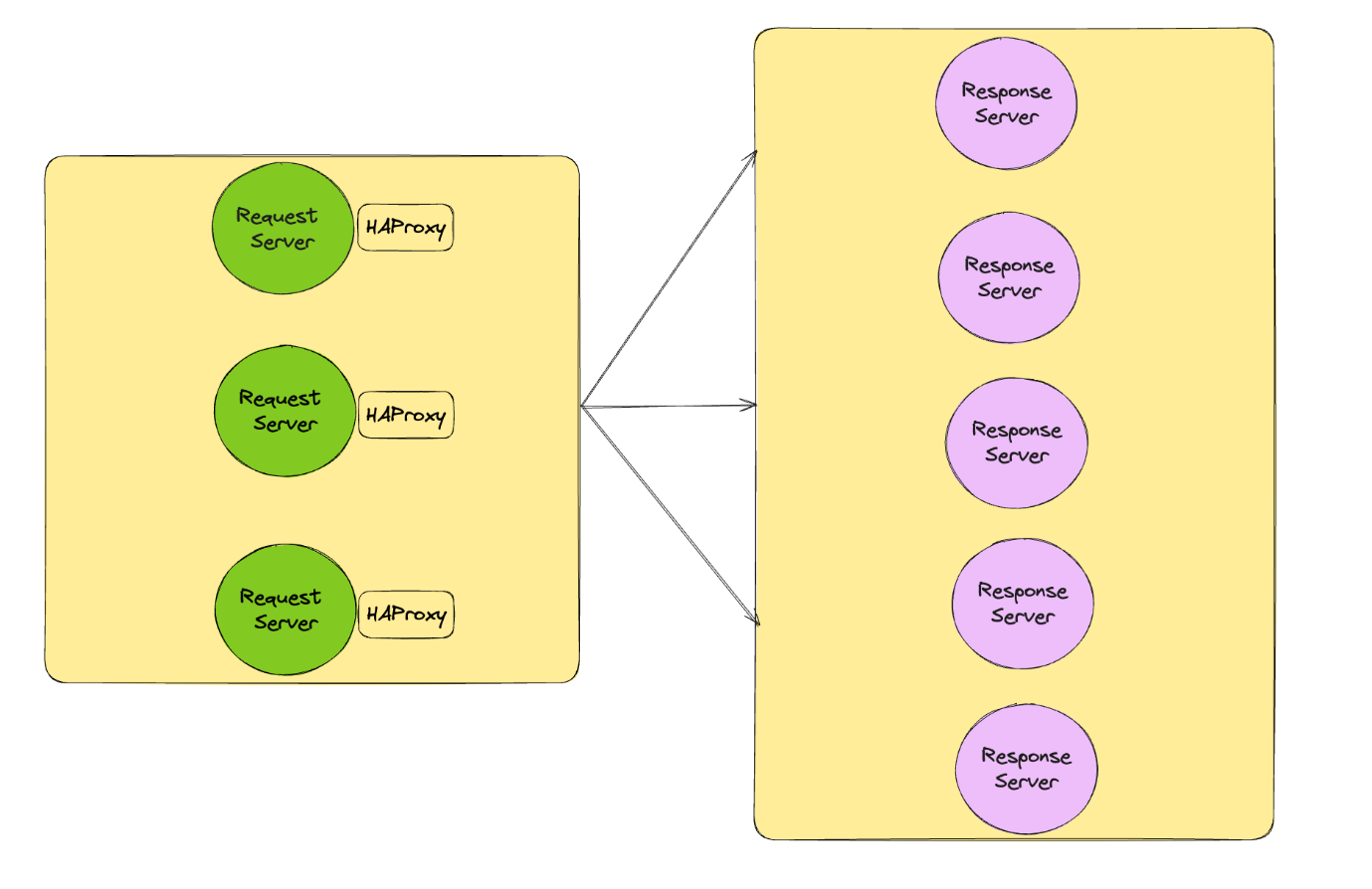Optimizing Server Management With HAProxy’s Advanced Health Checks

This article delves into HAProxy's utility as a highly available load balancer and implementing an optimized configuration to act against unexpected server failures.
HAProxy is one of the cornerstones in complex distributed systems, essential for achieving efficient load balancing and high availability. This open-source software, lauded for its reliability and high performance, is a vital tool in the arsenal of network administrators, adept at managing web traffic across diverse server environments. At its core, HAProxy excels in evenly distributing the workload among servers, thereby preventing any single server from becoming a bottleneck. This functionality enhances web applications' overall performance and responsiveness and ensures a seamless user experience. More importantly, HAProxy is critical in upholding high availability — a fundamental requirement in today's digital landscape where downtime can have significant implications. Its ability to intelligently direct traffic and handle failovers makes it indispensable in maintaining uninterrupted service, a key to thriving in the competitive realm of online services. As we delve deeper into HAProxy's functionalities, we understand how its nuanced approach to load balancing and steadfast commitment to high availability make it an irreplaceable component in modern distributed systems. This article will mainly focus on implementing a safe and optimized health check configuration to ensure a robust way to remove unhealthy servers and add healthy servers back to the rotation.
Dynamic Server Management in HAProxy
One of the standout features of HAProxy is its ability to dynamically manage servers, meaning it can add or remove servers from the network as needed. This flexibility is a game-changer for many businesses. When traffic to a website or application increases, HAProxy can seamlessly bring more servers online to handle the load. Conversely, during quieter periods, it can reduce the number of servers, ensuring resources aren't wasted.
This dynamic server management is crucial for two main reasons: scalability and fault tolerance. Scalability refers to the ability of a system to handle increased load without sacrificing performance. With HAProxy, this is done effortlessly. HAProxy scales up the system's capacity as demand grows by adding more servers, ensuring that a sudden spike in users doesn't crash the system. This scalability is vital for businesses that experience fluctuating traffic levels or are growing quickly.
Fault tolerance is another critical benefit. In any system, servers can fail for various reasons. HAProxy's dynamic server management means it can quickly remove problematic servers from the rotation and reroute traffic to healthy ones. This ability to immediately respond to server issues minimizes downtime and keeps the application running smoothly, which is crucial for maintaining a reliable online presence.
In short, HAProxy's dynamic server management offers a flexible and efficient way to handle varying traffic loads and unexpected server failures, making it an indispensable tool for modern web infrastructure.

Sample Architecture depicting HAProxy routing requests
The above image shows a typical architecture style of request and response servers. HAProxy is installed and configured in this particular setup on all the servers sending requests. HAProxy is configured here so all the response servers are in rotation and actively respond to the requests. HAProxy handles routing and load-balancing requests to a healthy response server.
Practical Scenarios and Use Cases
HAProxy's dynamic server management proves its worth in various real-world scenarios, demonstrating its versatility and necessity in modern web infrastructures. Let's explore some critical instances where this feature becomes crucial:
Handling Traffic Spikes
Imagine an online retail website during a Black Friday sale. The traffic can surge unexpectedly, demanding more resources to handle the influx of users. With HAProxy, the website can automatically scale up by adding more servers to the rotation. This ensures that the website remains responsive and can handle the increased load without crashing, providing a seamless shopping experience for customers.
Scheduled Maintenance Periods
HAProxy offers a smooth solution for websites requiring regular maintenance. During these periods, servers can be taken down for updates or repairs. HAProxy can reroute traffic to other operational servers, ensuring that the website remains live and users are unaffected by the maintenance activities.
Unexpected Server Failures
In scenarios where a server unexpectedly fails, HAProxy's health check mechanisms quickly detect the issue and remove the faulty server from the pool. Traffic is then redistributed among the remaining servers, preventing potential service disruptions and maintaining uptime.
Media Streaming Services during Major Events
Viewer numbers can skyrocket unexpectedly for services streaming live events like sports or concerts. HAProxy helps these services by scaling their server capacity in real-time, ensuring uninterrupted streaming even under heavy load.
Optimizing Health Checks for Effective Server Rotation
This section will explore implementing a safe and optimized health check configuration to act against unexpected server failures described above. Unexpected server failures are inevitable in network systems, but with HAProxy, the impact of such failures can be significantly mitigated by implementing and optimizing health checks. Health checks are automated tests HAProxy performs to evaluate the status of servers in its pool continually. When a server fails or becomes unresponsive, these checks quickly identify the issue, allowing HAProxy to instantly remove the problematic server from the rotation and reroute traffic to healthy ones. This process is essential for maintaining uninterrupted service and high availability.
The code snippet below shows one approach to implementing robust health checks. For more details about syntax and keywords in the HAProxy.cfg file, please refer to the manual page.

HAProxy.cfg code snippet for health checks
- inter - This parameter represents the frequency of time interval between health checks fast
- fall - represents the number of failed checks before removing the server from rotation
- rise - represents the number of passing checks before adding the server back to rotation
With inter 2s fall 2 rises 10, we are configuring HAProxy to perform health checks every 2 seconds on the provided URI path. If HAProxy encounters two (fall 2) consecutive failing checks on a server, it will be removed from rotation and won't take any traffic. Here, we take an aggressive approach by keeping the threshold for failure very low. Similarly, rise 10 ensures that we take a conservative approach in putting a server back in the rotation by waiting for ten consecutive health checks to pass before adding it back to the rotation. This approach provides the right balance when dealing with unexpected server failures.
Conclusion
In conclusion, HAProxy's dynamic server management, along with its sophisticated health check mechanisms, plays a vital role in modern-day distributed systems infrastructure stack. By enabling real-time responsiveness to traffic demands and unexpected server issues, HAProxy ensures high availability, seamless user experience, and operational efficiency. The detailed exploration of real-world scenarios and the emphasis on optimizing health checks for server rotation underscore the adaptability and resilience of HAProxy in various challenging environments. This capability not only enhances system reliability but also empowers businesses to maintain continuous service quality, a critical factor in today's digital landscape. Ultimately, HAProxy emerges not just as a tool for load balancing but as a comprehensive solution for robust, resilient systems, pivotal for any organization striving for excellence in online service delivery.
We Provide consulting, implementation, and management services on DevOps, DevSecOps, DataOps, Cloud, Automated Ops, Microservices, Infrastructure, and Security
Services offered by us: https://www.zippyops.com/services
Our Products: https://www.zippyops.com/products
Our Solutions: https://www.zippyops.com/solutions
For Demo, videos check out YouTube Playlist: https://www.youtube.com/watch?v=4FYvPooN_Tg&list=PLCJ3JpanNyCfXlHahZhYgJH9-rV6ouPro
If this seems interesting, please email us at [email protected] for a call.
Recent Comments
No comments
Leave a Comment
We will be happy to hear what you think about this post